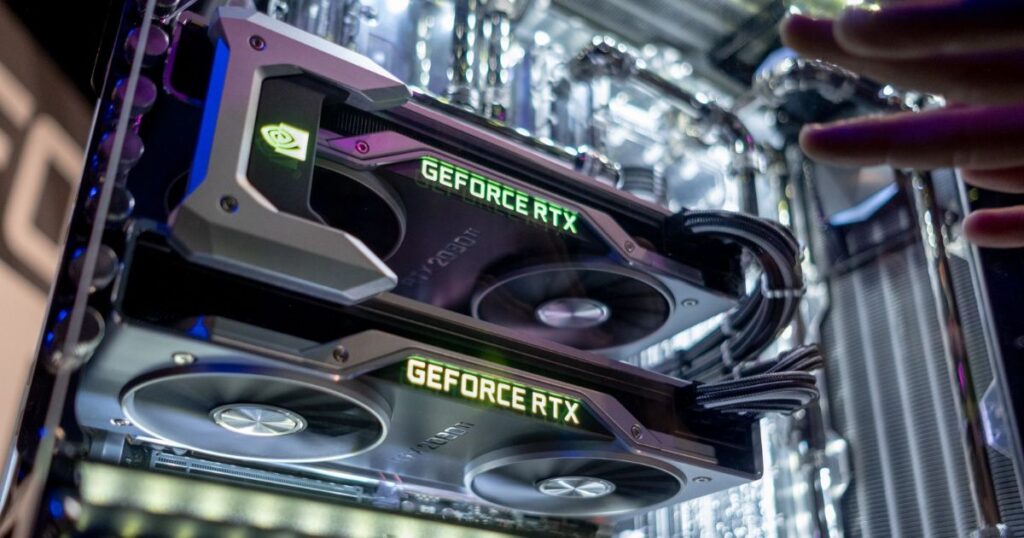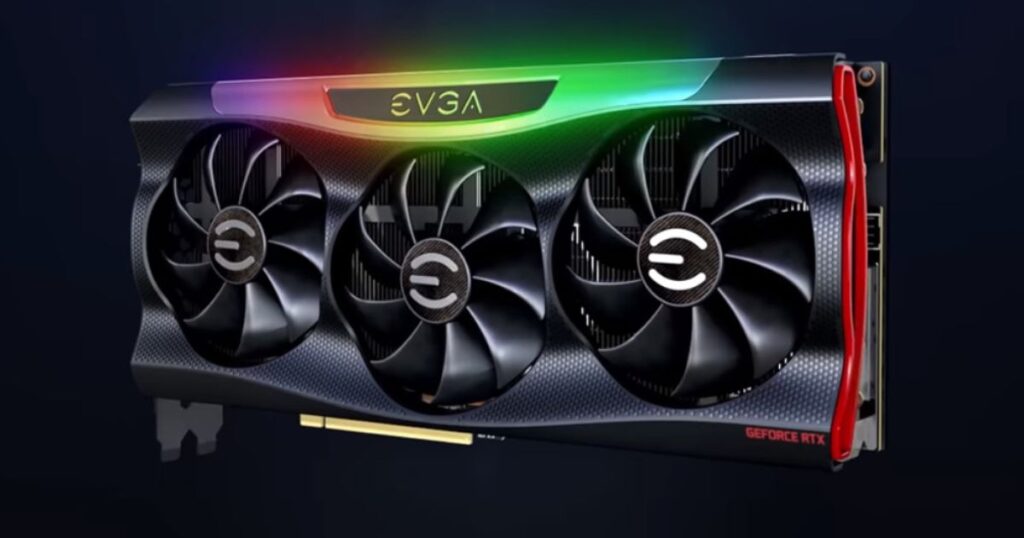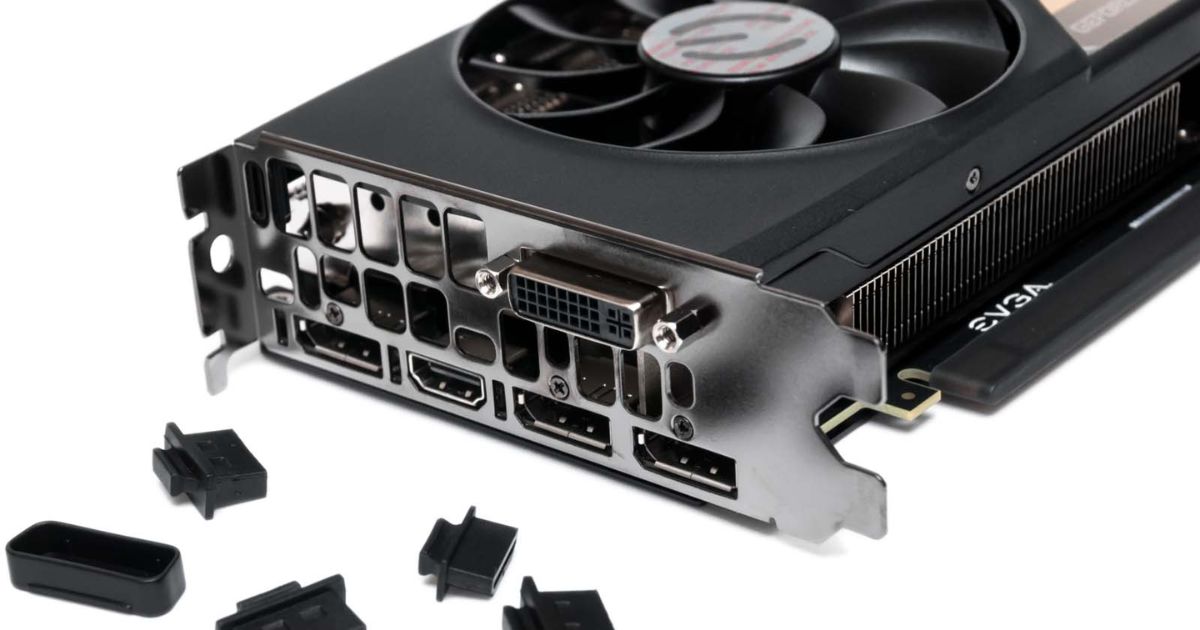When shopping for graphics cards, the abbreviations FTW and other terms may seem confusing. This guide explains what these shortcuts signify from EVGA and how they impact performance. Understanding the differences between FTW, SSC, FTW3, and more illuminates the best options for specific needs like hardcore gaming or overclocking.
From EVGA’s highest-performing variants to entry-level models, deciphering lineup names is pivotal to choosing the right GPU. Discover how terms such as FTW and SSC impact speeds, cooling, and factory overclocking. Learn the differences between editions to pick exactly what features suit your setup. With clarity on model details, shopping becomes simpler.
EVGA designs different GPU models for capabilities ranging across gamers. The section here breaks down what terms signify. FTW denotes models factory overclocked for elite speeds. SSC provides moderate gains. A single fan means simpler cooling. Learn how specs differ between FTW, FTW3, and standard options. Make informed purchase decisions understanding unique traits catered to user needs.
FTW vs. Other GPU Models?

EVGA designs GPUs for gamers with varying needs. Discover performance traits distinguishing FTW variants from regular or economy models. FTW indicates factory overclocking optimized cooling. Other terms impact speeds and abilities enabling software to take full advantage of your system’s power. Know clearly what features align with your setup goals. GPU Brands Matter when choosing components optimized for maximum performance.
How FTW Compares:
FTW versions undergo premium factory overclocking and cooling enhancements exceeding standard GPU limits.
FTW vs. Standard GPUs:
Faster out-of-the-box speeds and stronger VRM deliver heightened performance benefits for gaming or content creation over reference specifications.
FTW vs. FTW3:
The newest FTW3 models employ extreme factory overclocking, hybrid cooling, and enhanced digital VRMs sustaining higher power delivery over predecessors.
What does FTW DT stand for in EVGA GPU?
FTW DT stands for “Founders Thermal Wraith,” denoting EVGA’s redesign of NVIDIA’s founding GPU model for improved thermals. These cards match reference board designs but feature upgraded vapor chamber cooling.
FTW DT cooling allows higher playable frame rates before thermal throttling sets in. They appeal to builders seeking reference PCBs for small form factors or water cooling while benefitting from extra thermal headroom for overclocking or intense gaming sessions.
The DT suffix communicates these models’ goal of dissipating more heat through enhanced cooling technologies while retaining stock PCB compatibility needs. Buyers get a temperature advantage better-realizing stock clock potentials with reduced risk of overheating issues under pressure compared to basic reference designs.
What is an SSC Graphics Card?
SSC stands for “Super Super Clock” signaling mild to moderate factory overclocks above standard specifications. EVGA implements the overclocks through the software while ensuring component quality and raising stock speeds by a percent or two. SSC-equipped cards offer higher out-of-box performance at a lower price point than demanding FTW models.
While avoiding intensive voltage adjustments, the moderate factory tweaks still maximize most PCs’ capabilities for smoother gaming on higher-quality visuals compared to baseline GPUs. SSC versions balance affordability with tangible speed boosts over regular editions.
FTW or FTW+: What’s the Better Option?
FTW signifies premium cooling and the highest factory clocks. FTW+ denotes a more robust power delivery and even higher stable clock rates through enhanced digital VRMs. Which is better depends on needs and setup. FTW excels for high-refresh gaming without peripherals like a complex water-cooled loop.
But FTW+ best facilitates extreme overclocking goals with capable cooling. Both sustain higher voltage production than reference designs, though FTW+ extends a greater factory overclocking headroom before stability issues. Choosing depends on priorities between performance out of the box or pushing limits with water blocks.
What is the Difference Between FTW & SSC?
FTW editions undergo rigorous component selection and beefier power delivery components like digital VRMs allow higher safe voltage adjustments compared to SSC variants. FTW cooling solutions prove more comprehensive with dual or triple fan designs keeping components cool under intensive overclocking or sustained gaming loads.
In contrast, SSC models feature a single fan and modest firmware-level overclocks. SSC appeals more to users seeking affordable speeds beyond stock, while FTW caters to enthusiasts pushing limits requiring additional thermal and electrical overhead. Know your tuning goals to pick the better performing and value proposition.
EVGA GTX 1070 FTW DT Review?
The EVGA GTX 1070 FTW DT implements the brand’s enhanced thermal cooling on a reference PCB layout. Its dual-fan ICX cooler and vapor chamber technology maintained an average temperature of 69°C during stress testing, three degrees less than the reference model.
Its unconstrained factory overclock of 2063MHz Core and 4508MHz memory provided a noticeable gameplay boost averaging 5-8fps more than stock speeds. While retaining VR compatibility needs, buyers gained extra thermal cushion allowing manual overclocking to stable clock targets. Combined with ample power phases, the FTW DT’s temperatures empowered performance-hungry users maximizing their chip’s capabilities.
Reviews for the FTW Variant Graphics Cards?
FTW editions consistently earn praise across generations for sustained speeds and temperatures during intense gaming. With premium factories overclock and cooling exceeding standards, FTW cards run quieter and cooler even when tuning further.
Dual or triple fan designs keep components comfortable saving manual adjustments. Additionally, EVGA’s renowned software support and generous warranties give buyers peace of mind.
While costing more initially, enthusiast-focused review communities agree FTW variants provide exceptional performance longevity thanks to their construction tolerating higher voltages and heat better than baseline counterparts. For dedicated gamers pushing hardware to its limits, the investment delivers rewards.
EVGA GTX Models?
EVGA designs various GTX models suiting gamers’ budgets and goals. GTX 1070 FTW applies premium binning, cooling, and factory overclocking. Reviewers verified its stable boosted speed exceeding stock by 8-10%, providing a tangible advantage. The GTX 1080 FTW enhances this formula with additional power phases sustaining even higher clock rates under stress.
For all-in-one liquid cooling, the EVGA GTX 2080 FTW3 Ultra Hybrid features a closed-loop system keeping it whisper quiet and temperatures low regardless of heavy tuning. Each step-up specification catered to users seeking ultimate frames through refined engineering.
EVGA GTX 1070 FTW:
Factory overclocked for heightened gaming performance straight out of the box.
FTW GTX 1080:
Offers the highest factory clocks and build quality for PC builders prioritizing maximum performance.
EVGA GTX 2080 FTW3 Ultra Hybrid Gaming:
All-in-one liquid cooling sustains silence and stability even under extreme overclocking loads.
What’s the difference between FTW, FTW DT, FTW+, SC, SSC, and single fans?
FTW variants undergo premium binning and cooling for enthusiast-class performance. FTW DT adapts the cooling to reference PCBs. FTW+ provides an even higher power limit. SC introduces moderate clock boosts. SSC offers mild factory overclocking at value pricing. Single fan models apply minimal changes over stock allowing affordable access.
Together these lineups cater to all user types – from those seeking savings to power users. FTW keeps temperatures low and stable for aggressive tuning while entry editions reliably play games as is. Knowing your needs helps select the specialization aligned to maximize your experience.
What is the difference between FTW and the XC series?
Where FTW pushes performance limits, XC favors affordability keeping speeds within safety thresholds. XC graphics cards implement single fan coolers and exhibit factory overclocks modest enough avoiding voltage or temperature issues. They provide stable and worry-free gaming experiences out of the box without intensive tuning.
In contrast, FTW editions apply aggressive factory overclocks paired with premium multi-fan cooling engineered to keep even heavily overclocked chips stable. FTW caters to users seeking bleeding-edge performance ready to manually optimize further. XC satisfies buyers’ values of energy efficiency and lower costs over extreme tweaking headroom.
EVGA GeForce GTX 980 Ti FTW Graphics Card Review?
EVGA’s flagship GTX 980 Ti FTW edition flexes premium components including a fully covered aluminum backplate and overclocked 1317MHz reference GPU clock. Its dedicated 10-phase digital power circuitry and dual-fan hybrid heatsink proved highly effective. During benchmarks, it maintained a temperature average of 69°C, similar to closed-loop liquid coolers despite passive case airflow.
Its stable factory overclock of 1,416MHz provided a tangible 6-10% gameplay boost. Combined with dedicated customer support, the board’s fit and finish earned high praise for long-term appeal. Overall owners recognized the investment delivers consistent high framerates worthy of its factory moniker.
ACX and ACX Black Editions?
EVGA’s base ACX (Advanced Cooling eXperiment) versions apply mild factory overclocking on standard GPU boost algorithms and thermal solutions. They represent mainstream value for price-conscious gamers seeking reliable stock-plus performance. ACX Black models step-up components slightly to semi-passive operation during light loads.
Both editions adequately cool chips for trouble-free gaming. Yet the more affordable ACX appellation indicates less rigorous component screening and enthusiasts hoping to push voltages greatly risk stability issues. Recognizing strengths in each series helps pick the best partner based on expected usage patterns and tuning goals within reasonable safety thresholds.
ACX Superclocked (SC) Edition?
SC editions undergo slightly higher factory overclocks achieved through EVGA’s proprietary Precision X1 software while maintaining reliability. Their single-fan ACX 3.0 coolers effectively dissipate thermal loads without noise even under sustained high-framerate sessions.
VRMs receive minor component upgrades enhancing stability when tuners manually apply further voltage adjustments. SC provides an accessible entry for users desiring uncomplicated yet tangible speed bumps over reference specifications. Their stable stock-level tuning removes overclocking learning curves, simplifying the out-of-the-box experience.
ACX Super Superclocked (SSC), FTW DT, and FTW Edition?
SSC inherits SC enhancements stepped up further via rigorous component selection and testing protocols like Prime95 burn-in. DX12 compatibility ensures smooth gaming on modern titles. FTW DT upgrades cooling for boosted speeds without voiding stock dimensions, as explained previously.
Topping the stack, plain FTW prioritizes maximizing performance allocation highest quality parts and robust power delivery fine-tuned for stability under sustained loads even when pushing voltages aggressively. Each advancement targets enthusiasts to varying extents, suiting intermediates seeking reliable boosted speeds or extreme overclockers.
ACX Super Superclocked (SSC):
Features mild factory overclocks paired with additional mild power enhancements over standard SC. The perfect balance of value and stable speeds.
FTW DT:
Incorporates improved cooling design focused on maintaining reference PCB compatibility needs. Grants high clock targets thermal headroom.
FTW Edition:
Caters strictly to extreme enthusiasts, implementing top-shelf components built for stressing voltages safely to achieve the highest overclocking headroom.
Classified and Hybrid Editions?
Classified models redefine how far air cooling can evolve with three axial fans maintaining consistent temps for record-breaking LN2 overclocking scores. Their beefy digital VRMs support higher Watts safely. Hybrid builds integrate pre-installed all-in-one liquid cooling loops eliminating manual fluid maintenance.
Pumped coolant perpetually absorbs thermal loads in tightly sealed circuits for dead-silent operation round the clock. Both aim beyond just stable gaming, perfecting subzero performance validation and dream benchmark runs over conventional air cooling through cutting-edge specialist constructions at premium build qualities.
Classified Edition:
Optimized for exotic cooling like liquid nitrogen with industrial tier components built to routinely operate under extreme overvolt conditions.
Hybrid Edition:
Integrates a self-contained liquid cooling loop in its factory build allowing silent speeds and the lowest achievable temperatures.
What’s the difference between FTW, FTW DT, FTW+, SC, SSC, and single fan?
This lineup spans value to premium. Single fan editions provide no-frills stock+ gaming. SC introduces modest firmware-level overclocks, while SSC grants moderate voltage and binning upgrades over SC. FTW DT focuses on customizing cooling for reference PCBs. FTW uses rigorous screening and multi-fan coolers for robust performance tuning potential.
And FTW+ builds on this with enhanced VRMs designed for extreme overclocking headroom. Overall EVGA’s differing series cater to all, from users satisfied playing stock to those seeking extensive manual tuning support backed by premium components to push voltages highly without stability concerns.
What do “SSC” and “FTW” stand for in EVGA graphics cards?
SSC stands for “Super Super Clock” indicating these models have received a mild to moderate factory overclock beyond Nvidia reference clocks using EVGA’s proprietary Precision X1 software. This provides a small performance boost for casual gamers at lower prices. Meantime, FTW stands for “For The Win” signaling EVGA’s top performers made for enthusiast-level tweaking.
FTW editions undergo extensive screening and extensive component reinforcement like extra VRM phases for reliable overvolting. Their oversized cooling solutions keep even aggressively tuned chips stable under heavy thermal loads. FTW grants the greatest overclocking headroom safely.
What is the difference between the FTW and XC series?
Where FTW leans heavily into premium components, robust power delivery, and extensive cooling for reliability under extreme tuning, XC models emphasize affordability and stock-level reliability above all else. XC cards feature basic single fan cooling and exhibit conservative factory overclocks avoiding temperature or stability risks with voltage adjustment.
They run games smoothly out of the box without tweaking demands. FTW caters to devoted hardware hackers intending to squeeze every last FPS through manual optimizations and stress-testing tolerances. XC satisfies users seeking efficient, low-maintenance graphics without overclocking complexities.
What does FTW dt stand for in EVGA GPU?
As explained, FTW DT stands for “Founders Thermal Wraith” referring to EVGA’s re-engineering of Nvidia’s reference design boards for better cooling performance. Specifically, FTW DT models match the original reference printed circuit board layouts to preserve compatibility with mini-ITX cases and custom water loops.
However, EVGA upgrades its cooling solution, typically implementing a custom-designed vapor chamber cooler. This allows for maintaining lower temperatures versus baseline reference coolers, granting extra thermal headroom to facilitate higher factory overclocks or manual tuning capabilities before thermal throttling sets in.
What does FTW Reference mean? Is it the same as the FTW model?
FTW Reference denotes a specific graphics card model engineered by EVGA to precisely match Nvidia’s reference PCB design and dimensions while upgrading the stock cooling solution. This is different from their standard FTW models which implement premium custom PCB designs.
The FTW Reference cards, much like the FTW DT versions, preserve compatibility with Mini-ITX cases and liquid cooling blocks through their use of the reference board layout. But they still include EVGA’s enhanced cooling technology for reduced temperatures and unlocked GPU potential compared to basic reference specs cards through stable higher factory overclocked default clock speeds.
What Does The FTW3 Stand For In Some Graphics Cards?

FTW3 has become EVGA’s top air-cooled graphics card brand signifying their most premium non-hybrid models optimized for elite overclocking headroom through extensive component reinforcement. The numeric increment recognizes advancements made versus earlier FTW editions.
Key upgrades include reinforced PCB trace layouts, enhanced power delivery with additional capacitor-based voltage regulation, and supplementary cooling from a third fan or upgraded heatsink design. Precisely matched thermal pads further lower temperatures.
Together these refinements allow FTW3 cards to consistently achieve higher benchmark overclocks safely under stress testing software like Prime95 compared to EVGA’s other high-performance variants like standard FTW cards.
Frequently Ask Questions
1. What does the FTW mean?
For The Win is what FTW stands for. In the gaming community, it’s frequently employed to signify that a product—such as a graphics card—is made for better performance and a competitive edge.
Therefore, a graphics card marked “FTW” indicates that it is high-performance and game-oriented.
2. What is the difference between FTW and XC?
FTW graphics cards are strong and packed with functionality for gaming. Because they are slightly less powerful and smaller, XC cards are a better option for customers on a budget or with smaller machines.
3. Are RTX graphics cards better than GTX?
In general, RTX graphics cards outperform GTX GPUs. They provide better performance as well as support for the graphics-quality-improving ray tracing technique.
The precise performance disparity, however, varies based on the graphics card model and generation.
4. What do SC and SSC mean?
“Superclocked,” or SC for short, denotes that the graphics card has been overclocked by the manufacturer to achieve better performance.
“Super Superclocked,” or SSC for short, denotes an even higher degree of factory overclocking, offering even better performance than the card’s ordinary version.
5. Do FTW GPUs require special cooling?
No, FTW GPUs do not by default require additional cooling. They have efficient cooling systems built in to support their operation.
Yet, additional cooling could be helpful if you overclock them to the limit or if your PC has inadequate ventilation.
6. Are FTW GPUs worth the extra cost?
Do FTW GPUs justify the additional cost? It varies. It might be worthwhile if you’re a serious gamer and want the greatest features and performance.
However, if you only intend to play games sometimes, a less expensive GPU can be sufficient. Consider your needs as well as your spending limit.
Final Thoughts
In summary, FTW denotes EVGA’s top-performance graphics cards. The FTW name indicates extensive binning, robust power delivery components, and aggressive factory overclocking. These high-end models are suited for extreme gaming and overclocking.
Meanwhile, terms like SSC, SC, and ACX signify more mainstream variants. These offer mild to moderate upgrades over reference specs at lower price points. They provide reliable gaming experiences without intensive tuning.
Overall, deciphering EVGA’s model naming scheme is key to choosing the right GPU. It allows matching capabilities to specific needs, whether pushing limits or hassle-free stock gaming. With clarity on features, shoppers can select the optimized solution for their setup and goals.











